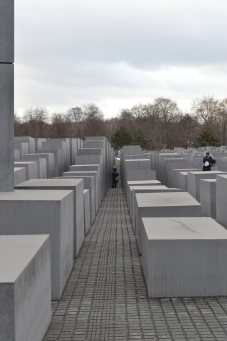Through the Turmoil
The hands on the clock of this adventure are beginning to wind to end. An impromptu trip to Holland gave way, rather quickly I might add, to our ten day trip through Germany.
The most significant amount of time was spent in the capital city of Berlin, in the northeasterly reaches of the country. Today the city is hailed as a hotbed of artistry, nightlife and progressive social movements. However, just a little over 25 years ago Berlin served as the forefront for the Cold War. Alas, Soviet occupation and iron-fisted rule of East Germany dissolved with the removal of the Berlin Wall and the dissolution of the USSR in the late 80’s and early 90’s- all while I was just barely out of my Pull-Ups – yes, I am a big kid now! Rewind the clock another 45 years and this city played stage to one of the most dramatic defeats in all of modern war in Nazi Germany’s fall and Hitler’s shameless taking of his own life. Forgive the gruesome and rather down-trodden approach to the beginning of this post but our experience with the city of Berlin was marked by the feeling that the city has yet to fully shake off it’s dark and fairly recent past. This is not a judgement but rather an opinion based on my short stay in this large, international city.
Our apartment was very near the center of town and the infamous Checkpoint Charlie which served as an entry point into East Germany during the Cold War period of 1961-1989. Very nearby was an outdoor exhibit of the Berlin Wall, with a small portion of the wall still standing.

As an East German citizen, you were forbidden to cross the border into West Germany without consent of the state, and you were sure to die at the hands of a mercenary should you attempt. Standing in the middle of the once “neutral zone” sent shivers down our backs.
We tended to stay very near this central part of town as there was so much to see in relation to the history of Berlin – the previous location of Fuhrer’s Bunker, Brandenberger Tower, The National Memorial for the Murdered Jews of Europe, to name a few.
Striking was the contemporary look of the city. As a result of the bombings which took place during the later campaigns of WWII, the majority of the buildings we passed and roadways we walked were much more modern than that of those in other countries we have visited in Europe. The city required a near-complete rebuild once Hitler’s regime had been defeated, which came with an incredible financial burden. In order to mitigate the cost, many of the buildings throughout the worst-affected areas were prefabricated; out of these institutional-flavored neighborhoods flourished street artists aplenty, akin to The Rose That Grew from Concrete. These grey-colored buildings have provided a near endless canvas for graffiti artists to leave their mark. While many cities in the US label this medium a blemish on their perfectly clean appearance, Berlin seems to have accepted it as a means of reconciling the rather drab appearance of their function-over-form infrastructure.
Just outside the city of Berlin was the Sachenhausen Concentration Camp which we visited for a couple of hours on a very cold and foggy afternoon. This camp served as the administration headquarters and the architectural model for all concentration camps under Hitler’s reign and as such, the German Democratic Republic (GDR) made a concerted effort to preserve this camp. There is very little which remains today but the GDR have gone so far as to reconstruct some of the buildings in order to allow visitors to see how prisoners lived, where they bathed, ate and received medical care. We wondered around the camp, glued to our audio guide as we learned of the deplorable conditions people lived in.
Throughout the tour and the multiple exhibits, signs were posted in memoriam of those held in this camp and to serve as a reminder that the people of this world must stand united in the face of would-be oppressors in order to prevent such an atrocity from ever happening again. I don’t think we can say that we ‘enjoyed’ this tour but we certainly found it to be deeply moving.
The city of Berlin is thriving, even buzzing today and serves as the symbol of the progress which can be made, even after great tragedies; through hard work, perseverance, and an open mind anyone in this world can cast aside preconceived notions.












